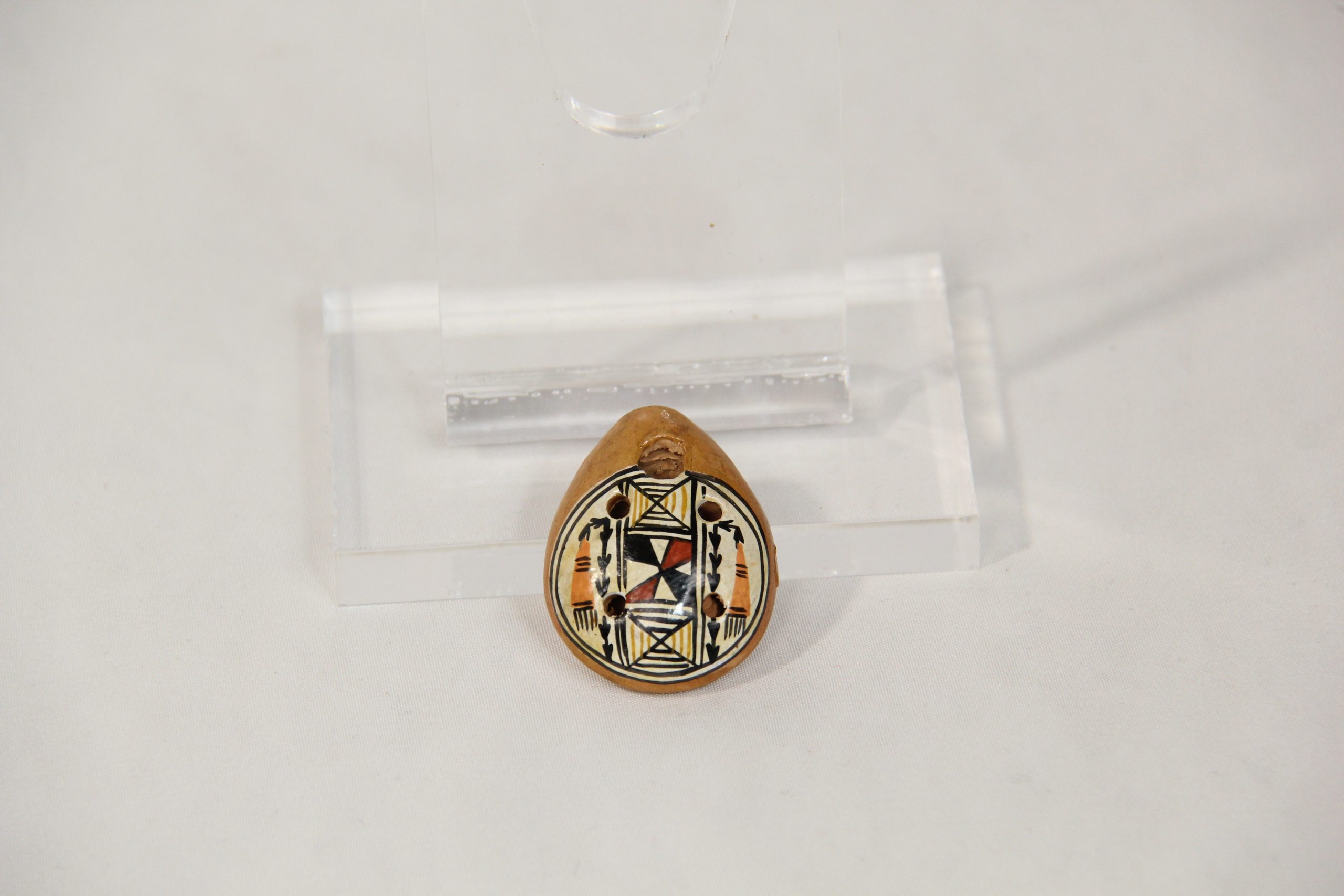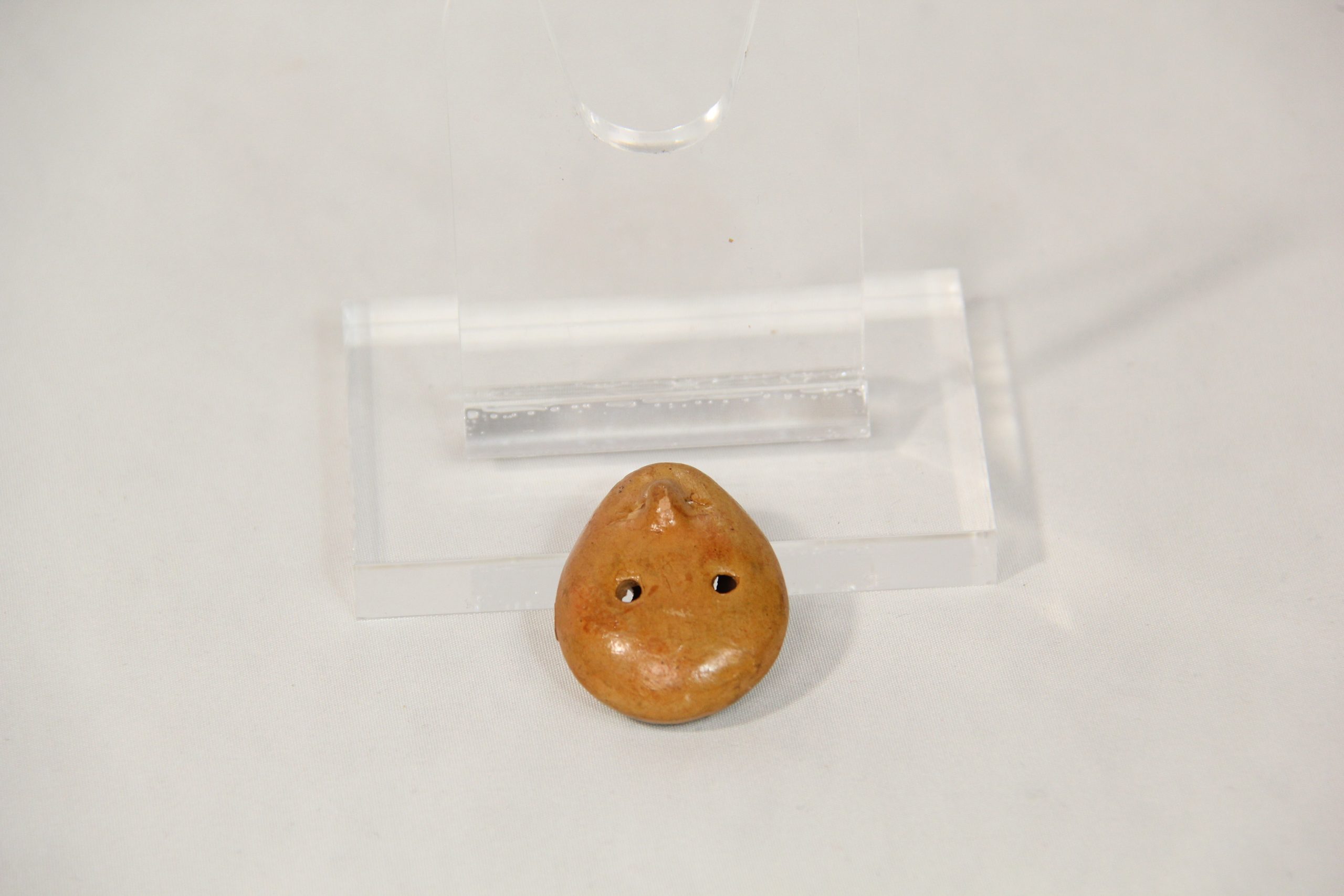Ocarina
Dating back to about 12,000 years ago, the ocarina has origins in South and Central America. The Mayans, Incas, and Aztecs crafted them to resemble or include designs of birds and animals. In what is now Peru, they were mostly crafted out of clay, as is this one. These Peruvian “pendant” ocarinas were highly decorated with colorful carvings and designs often depicting spirit animals and gods. The Incas used this type of ocarina frequently for rituals, festivals, and ceremonies.
The instrument sounds most similar to a flute when played and different pitches are achieved by covering and uncovering holes, as well as adjusting air strength and speed. Ocarinas are a very popular factor of modern Peruvian tourism, and are often sold to or made by tourists as souvenirs. These souvenir instruments can be found at most historical Inca sites, including Machu Picchu, where this one was made, often featuring elaborate designs but lacking the sound quality of the ancient instruments.
Sources
1. “Culture of Machu Picchu.” Machu Picchu. Accessed June 15, 2022. https://www.region18.org/uploaded/faculty/ltraver/Dylan/culture.html.
2. Hobbs, Jared. “The Ocarina Almanac.” Ledger Note, August 22, 2021. https://ledgernote.com/columns/woodwinds-reeds/the-ocarina-almanac/.
3. “Return to the Andes: Ocarina Workshop in Peru.” Ocarina, September 1, 2011. https://www.ocarina.co.uk/return-to-the-andes-ocarina-workshop-in-peru/.

